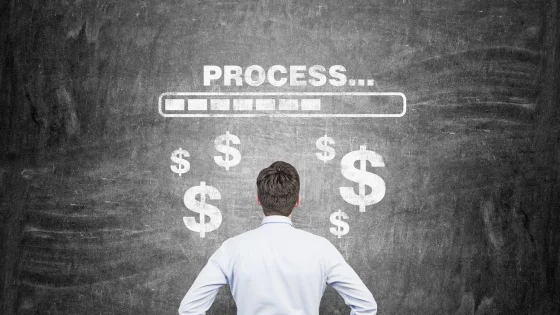Introduction: Why Budgeting Matters Even With No Income
Budgeting is an essential life skill that many people associate with having a steady income. But what if you have no income? Is budgeting still possible? The short answer is yes! Whether you’re between jobs, a student, or simply going through a tough financial period, starting budgeting with no income can help you take control of your financial situation and prepare for a brighter future.
Creating a budget without an income might feel overwhelming, but it’s an empowering process that can bring clarity to your financial life. Understanding your needs and limitations will help you make informed decisions. In this guide, we’ll explore practical steps to build a budget even when your income is zero or minimal. You’ll learn how to prioritize your needs, reduce expenses, and set achievable financial goals. Let’s get started!
Understanding the Basics: What Is Budgeting and Why Is It Important?
Before diving into budgeting with no income, let’s clarify what budgeting is. Budgeting involves creating a plan for your money to ensure that your essential needs are met, and you’re prepared for future expenses.
A budget is more than just a list of numbers; it’s a powerful tool that allows you to take control of your finances. It gives you a clear view of your financial situation, helping you identify areas where you can save and prioritize your spending. Without a budget, it’s easy to lose track of where your money is going, leading to unnecessary stress and financial insecurity.
Why Budgeting Is Essential for Everyone
- Financial clarity: Budgeting helps you understand your financial situation.
- Goal setting: It allows you to set short-term and long-term financial goals.
- Stress reduction: Knowing where your money goes reduces financial anxiety.
When you have no income, budgeting becomes even more critical. It forces you to focus on what matters most and find ways to survive and thrive with limited resources. Budgeting can also help you discover alternative income sources and reduce unnecessary expenses.
In times of financial uncertainty, a well-structured budget can be a lifeline. It ensures you’re making the most out of what you have and preparing for better times ahead.
Assessing Your Current Financial Situation
Before you start budgeting, take a moment to assess your current financial state. This includes understanding your savings, debts, and any potential sources of assistance. Knowing where you stand financially is the first step toward creating a sustainable budget.
Start by taking inventory of your financial resources. Even if you have no regular income, you may have savings, assets, or other resources that can help you get through a difficult period.
Steps to Assess Your Finances
- List your assets: How much money do you have in savings? Include cash, bank accounts, and any investments.
- Identify your debts: Are there any loans, credit card balances, or unpaid bills? Make a list of all your outstanding obligations.
- Look for potential income sources: Can you sell any items, do odd jobs, or access government assistance? Consider any opportunities to bring in extra cash.
Assessing your finances also involves understanding your spending habits. Review your past expenses to see where your money has been going. This will help you identify areas where you can cut costs and prioritize your spending.
Prioritizing Essential Expenses: What Needs to Be Paid First?
When you have limited or no income, prioritizing expenses is crucial. Focus on the essentials first to ensure your basic needs are met. This means allocating your resources to cover necessary expenses before considering any discretionary spending.
Essential Expenses to Prioritize
- Housing: Rent, mortgage, or shelter expenses are non-negotiable. Keeping a roof over your head should be your top priority.
- Food: Groceries and basic nutritional needs come next. Focus on affordable, nutritious options to stretch your budget.
- Utilities: Electricity, water, and internet (if necessary for job searching) are important to maintain your daily life.
- Transportation: Gas or public transportation costs for essential travel should be accounted for, especially if they’re related to job hunting or attending important appointments.
If you’re struggling to meet these essential expenses, look for community resources such as food banks, shelters, or utility assistance programs. It’s also worth reaching out to service providers to see if they offer hardship plans or payment extensions.
Consider cutting out non-essential expenses like streaming services, gym memberships, or dining out until your financial situation improves. These small sacrifices can make a big difference in stretching your limited resources.
Creating a Zero-Income Budget Template
A zero-income budget is a budget plan based on your current resources rather than a paycheck. This type of budget focuses on managing what you have right now, rather than anticipating future income.
Steps to Create a Zero-Income Budget
- Calculate your total available resources: Add up your savings, any financial assistance you’re receiving, and potential income from selling items or odd jobs.
- List your essential expenses: Refer to your prioritized list of housing, food, utilities, and transportation.
- Allocate your resources accordingly: Make sure your resources cover your essential expenses first. If there’s anything left over, consider allocating it toward an emergency fund or paying down debt.
- Track your spending and adjust your budget as needed: Regularly review your budget to ensure you’re staying on track and make adjustments as your situation changes.
Using a zero-income budget helps you stay on top of your finances, even if your income is temporarily halted. It also helps you focus on what you can control, giving you a sense of empowerment during uncertain times.
Consider using a budgeting tool or template to make this process easier. There are many free resources available online that can help you create a zero-income budget.
Cutting Costs: How to Reduce Expenses When You Have No Income
Reducing your expenses is one of the most effective ways to manage your finances when you have no income. Every little bit saved can make a significant difference in your financial stability.
Tips to Cut Expenses
- Cancel subscriptions: Temporarily pause services you don’t need. This includes streaming platforms, magazines, and gym memberships.
- Cook at home: Avoid dining out to save on food costs. Look for budget-friendly meal plans and recipes.
- Use free resources: Take advantage of free entertainment, community resources, and local food banks.
- Negotiate bills: Contact your service providers to see if you can negotiate lower rates or payment plans.
Look for creative ways to reduce expenses, such as bartering services with friends or neighbors or participating in community swap events.
Finding Temporary Income Sources
While you may not have a steady income, there are ways to bring in temporary funds. Explore creative ways to earn money during tough times.
Ideas for Temporary Income
- Freelance work: Offer your skills online through platforms like Upwork or Fiverr.
- Selling items: Declutter your home and sell unwanted items on marketplaces like eBay or Facebook Marketplace.
- Odd jobs: Babysitting, pet sitting, or yard work can provide quick cash.
- Government assistance: Research available programs that you may qualify for, such as unemployment benefits, food stamps, or housing assistance.
Finding temporary income sources can relieve financial stress and help you stay on top of your essential expenses.
Taking Control of Your Finances Starts Now
Starting budgeting with no income might seem daunting, but it’s entirely possible with the right mindset and strategies. By assessing your situation, prioritizing essential expenses, cutting costs, finding temporary income, and setting achievable goals, you can navigate this challenging time with confidence.
Take control of your financial future today. Remember, every small step you take brings you closer to financial freedom. Stay committed, stay motivated, and keep going — you’ve got this!


